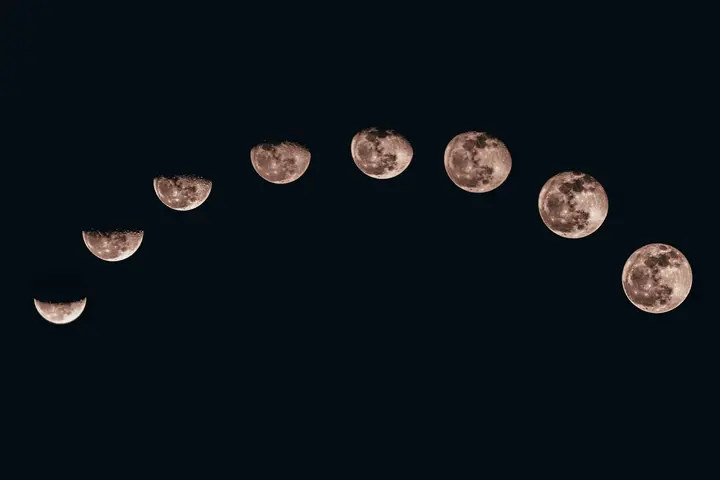Shocking fact: the moon is moving away from the earth!

It's a fact: the moon is moving away from Earth, but does this amount to the moon escaping (or escaping) from its orbit? Scientists investigate the possible causes of this event through our geological past and other methods. Find out how this will affect our planet.
Show key points
- The Moon is gradually moving away from Earth at a rate of approximately
- 8 centimeters per year, a process first detected with laser measurements starting in 196
- This lunar recession is largely attributed to tidal friction, which slows Earth's rotation and transfers angular momentum to the Moon, pushing it farther from the planet.
- ADVERTISEMENT
- Edmund Halley was the first to observe signs of the Moon’s increasing distance using historical eclipse records nearly three centuries ago.
- Geological evidence in sedimentary layers from Western Australia supports the theory of lunar distancing and reflects patterns linked to ancient Milankovic cycles.
- The Milankovic cycles, specifically Earth's axial precession, not only affect climate trends but also indicate that the Moon was previously closer to Earth when this cycle occurred more frequently.
- As the Moon continues to drift away, Earth’s rotation will slow down, causing longer days and leading to more extreme seasonal temperatures.
- Despite the Moon moving away, scientists confirm it won't escape Earth's gravity entirely; eventually, a stable orbital distance will be reached.
The Moon's distance from our planet is imperceptible to the human eye.

If you think that the Moon orbits the Earth without changing its course and that it will continue to do so for thousands of years to come, today you will know that this is actually not true. Our natural satellite is gradually moving away from the planet, and we've been able to see this since 1969, when NASA installed reflective panels on the moon during the Apollo missions. Since then, laser beams have been released from Earth, enabling accurate determination of the annual rate at which the moon moves away from us.
Recommend
The first scientist to notice this peculiarity was Edmund Halley nearly 300 years ago, who, after studying ancient eclipse records, was able to come to this conclusion. This decline is thought to be due to tidal friction in the oceans, which affects the speed of the Earth's rotation: by slowing it down, the resulting angular momentum loss (burst) is compensated for in the moon's acceleration, making it move further and farther away.
It has now been shown that the moon moves away from Earth at a rate of about 3.8 cm per year. Researchers at Utrecht University and the University of Geneva have implemented various methods to determine the moon's past. The decline of the moon has been studied several times: in addition to various theories, there are some new developments. The last signals are found in the layers of ancient rocks on Earth.
The relationship between sediments and Milankovic cycles

Scientists in Western Australia have found 2.5 billion years old geological evidence. In the sedimentary layers of the Karijini National Park, which had been deposited on the ocean floor and are now present in the earth's crust, regular periods of rocks of different thickness and shades have been identified. These differences in rock patterns may be associated with the "Milankovich cycles".
In addition to affecting Earth's climate over long periods of time, Milankovic cycles influence the moon's distance, specifically through the climate precession. The motion of the Earth, or the direction of the Earth's axis of rotation around itself, has changed over time. As the study shows, the role of this proactive motion is currently 21,000 years, but this period was shorter in the past when the moon was closer to Earth.
How does lunar distancing affect Earth?

First, as the Earth's rotation speed decreases, the days on Earth will become longer and longer. On the other hand, winters will be colder and summers hotter. Because of the low impact of the moon's gravity on the planet, the tides will not be as strong, however, they will still exist, albeit slightly, due to the influence of the sun.
NASA says sea level rise due to climate change, coupled with the impact of the lunar nodal cycle, will cause a significant increase in the amount of flooding by 2030.
One thing is certain: you don't have to worry about the moon's absence, because it will never escape Earth's gravity. At a certain point, the Moon and Earth will reach equilibrium and the Moon will stop moving away.
![]()
Honoring Arab-American Heritage, Stories and Changemakers
Arab Americans have shaped U.S. culture for centuries, with waves of immigration starting in the 19th century. Today, they lead in law, literature, comedy, and medicine—like poet Khalil Gibran and comedian Maysoon Zayed. In 2022, April was officially designated as Arab-American Heritage Month to celebrate their contributions. more- ADVERTISEMENT
![]()
Shocking fact: the moon is moving away from the earth!
The Moon is slowly drifting away from Earth—about 3.8 cm each year—due to tidal friction. This subtle shift has been proven through laser technology since 1969. While it won't escape Earth’s gravity, the distancing affects Earth's rotation, making days longer and altering tides and seasonal temperatures. more- ADVERTISEMENT
![]()
Success Guide - How to tame anxiety, stress and work stress?
Feeling overwhelmed by anxiety, stress, or work pressure? This simple guide offers practical steps like deep breathing, walking, quality sleep, setting boundaries, and staying organized to help you cope and regain balance. Remember, small changes can make a big difference—and you're not alone. more- ADVERTISEMENT
![]()
How to identify and transform a bad manager: lessons learned and the path to success
Bad managers hurt morale, kill productivity, and damage a company’s success. They micromanage, lack empathy, and avoid conflict, leading to high turnover and chaos. But the journey to becoming a good manager starts with self-awareness, better communication, and trust—turning toxic workspaces into thriving ones. more- ADVERTISEMENT
![]()
Social entrepreneurship: How do your projects make a positive impact on society?
Social entrepreneurship is all about using innovative ideas to solve social and environmental problems while creating jobs and boosting the economy. It’s growing fast in the Arab world, especially in places like Egypt and the UAE, offering hope for a better, more sustainable future despite funding and awareness challenges. more- ADVERTISEMENT
![]()
Simple ways to ascertain the nature of the curved ground
You don't need fancy tools or deep science to see Earth's curve—just use your camera, observe buildings, watch ships at sea, enjoy a flight, explore space photos, witness an eclipse, or study ocean tides. These simple experiences reveal the beautiful, curved nature of our planet in creative and exciting ways. more- ADVERTISEMENT
![]()
3 skills in demand in the labor market to get a job
3 Skills required in the labor market to get a job more- ADVERTISEMENT
![]()
Unexplained phenomena - a list that drives you crazy!
Marfa lights, glowing mysteriously in Texas deserts, and intricate crop circles bent into fields with no clear cause, both baffle scientists and spark theories from the natural to the supernatural. The Bermuda Triangle, too, remains a hotspot of intrigue, with ships and planes vanishing, leaving only questions and fascination behind. more- ADVERTISEMENT
![]()
Life lessons that I realized after the age of forty and wished I had learned them at twenty: Is it too late to arrange your life in the forties?
Life Lessons I Realized After I Turned 40 That I Wish I Learned at 20- Is it Too Late to Get Your Life Together in Your 40s more- ADVERTISEMENT
![]()
How to learn any language in a short time? 8 practical tips
There’s no quick fix for learning a language, but with steady effort and the right methods—like setting goals, practicing daily, or using apps like Duolingo—you’ll improve with time. Surround yourself with the language and focus on real-life use rather than just grammar. more- ADVERTISEMENT





















